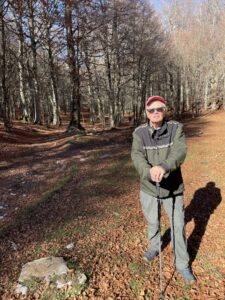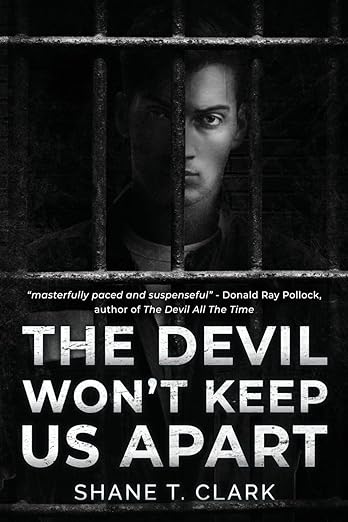When growing up in Cleveland, playing baseball in the street was one of our favorite summer pastimes. Most summer days or evenings would find us starting a pick-up game, usually in front of our house. One of us would toss a bat to another and the person catching it would grab it with one hand. The two kids would alternately place their hand on the bat. The one who was able to get the last hand at the top of the bat would get to pick the first player. After picking teams, the game got underway!
The pitcher and batter would stand in the center of the street, with first and third bases positioned by the curbs. A car would sometimes come by and interrupt the game as we kids urged the car to move along.  True, it was a residential side street without much traffic, but you don’t see that type of activity happen much nowadays. Not with the multitude of organized activities.
True, it was a residential side street without much traffic, but you don’t see that type of activity happen much nowadays. Not with the multitude of organized activities.
Under the rules of the game, the ball would be in foul territory if it went over the curb before passing a base, but could still be a fair ball if it hit the tree lawn past one of the bases.
Many of you may now be now saying… tree lawn? What on earth is that? In Cleveland, the tree lawn was, and is, the strip of lawn between the sidewalk and the curb. And often, there was a tree planted on that piece of lawn. And the owner of the house mowed that strip of lawn, even though technically, it was outside of their property line.
The concept of a tree lawn is not unique to Cleveland, but the name used for that strip of grass can generate heated discussions. Other cities have other names for the small piece of grass–city strip, curb strip, berm, and even devil’s strip. The name used for this area seems to be guided by geographic location. In order to be understood locally, especially by young kids playing ball in the street, one had to use the correct term. Correctness, or precision was important.
If I were to use the term “tree lawn” in a city where “city strip” was the local usage, I might be technically correct in my view. But I would be totally wrong in the view of the locals.
There are many words like this that can vary based on place or culture. I was recently discussing with my friend Shanna two other words whose difference can stir up arguments over Thanksgiving dinner–the difference between “stuffing” and “dressing.”
No doubt that precision in word choice can make a difference in the understanding of the listener or reader about the meaning of what is being said. Fortunately, the English language allows for using a word that focuses on precision in meaning.
In my book, What’s the Difference, I explore many words that seem similar but have different meanings. For example, often the words graveyard and cemetery are used interchangeably. The use of “graveyard” suggests that the graves are adjacent to a church, and that the burials in the yard of the church were done in connection with membership in the church. The use of the word “cemetery” suggests a more communal location for burials that are not necessarily associated with a church.
An example of a term that varies based on geography is the word that is used for a severe tropical storm. If the storm forms over the Atlantic Ocean or the Caribbean Sea, it is known as a hurricane. If the storm forms over the southern Pacific Ocean or Indian Ocean, it is a cyclone. And if the storm forms over the western Pacific Ocean or South China Sea, it is called a typhoon. No difference in the damage that they can cause though.
One of my favorite selections from the book is the difference between two words that are often used interchangeably–maze and labyrinth.
A maze can be a fun route to try to escape, and that is actually the point of the maze–to see if the person traversing its paths can find the way out. Many people enjoy trying to figure out mazes drawn on paper in puzzle books. I recall enjoying the fun of trying to draw up a maze for others to try to solve.
A labyrinth, however, has only one route, one path in and out, and is often used for meditation while walking the path. One of the most well-known labyrinths is to be found in the cathedral in Chartres, France.
Bodies of water offer other examples of differences not necessarily readily apparent. Lakes, seas, gulfs, or bays can all be smaller or larger than the other bodies of water in this group. Size, salinity, water or land boundaries all factor into the correct term.
Examples of words like this suggest that the writer or speaker should strive for precision in delivering their message. If a writer uses the word “motor” instead of “engine,” “cement” instead of “concrete,” or “sherbet” instead of “sorbet,” a reader might have a different understanding than the writer intended. Or using “cougar” instead of “mountain lion”… oops, those are actually two words for the same animal.
Trying to be precise in language can lead to fun conversations or heated arguments and can definitely be a conversation starter! You probably already know the difference between stuffing and dressing, but how about the difference between an archipelago and an atoll? Or the difference between vapors and fumes? What’s the Difference discusses these and many other similar words.
Find the Author
 What’s the Difference?
What’s the Difference?
Words that we frequently use interchangeably often have subtle differences, and sometimes have significantly different meanings. This book provides a fun look into the array of words in the English language that have similar meanings.







